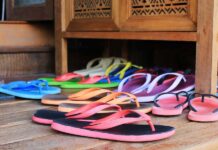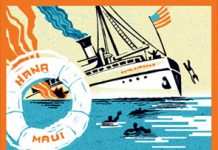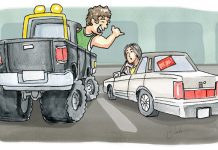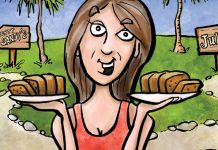Tom Stevens | Illustration by Guy Junker
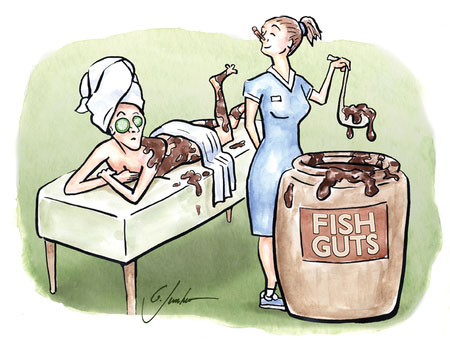 From “Valley Isle” to “World’s Best Island,” its marketers have bestowed upon Maui many monikers.
From “Valley Isle” to “World’s Best Island,” its marketers have bestowed upon Maui many monikers.
So far, “the Healthy Isle” hasn’t been one of them—but that’s not for lack of trying.
Ever since Polynesian discoverers beached their voyaging canoes here, Maui healers have striven to convince the rest of us we can live longer, healthier, more fulfilling lives if we just follow their advice.
As with most advice, some has stood the test of time well; some, not so well. And there has always been controversy.
Take diet, for instance. Few Mauians of any era would argue with the old Hawaiian saying: I ola no ke kino i ka ma‘ona o ka opu (the body enjoys health when the stomach is well filled). The arguments start when we ask: “Filled with what?”
Every culture has its own answer. “Eat rice,” advise the Okinawans. “Eat poi,” urge the Hawaiians. “Bagoong for long life,” the Filipinos insist, brandishing their pungent fermented fish-gut relish. More recent arrivals recommend blood sausage, hot chilis or chicken soup.
My favorite decades for dietary discourse on Maui were the 1960s and 1970s. In addition to all the resident cultural groups—Hawaiians, Chinese, Japanese, Okinawans, Koreans, Portuguese, Puerto Ricans, Filipinos, Scots, Russians, Germans, Pacific Islanders and I apologize to those I’ve left out—there swept ashore a tsunami of odd new dietary faddists and cultists.
First came phony fish-and-poultry vegetarians, then real vegetarians, then ovo-lacto vegetarians, and finally true vegans. Maui also absorbed fruitarians who ate only fruit, papayans who ate only papaya enzymes, and breatharians who subsisted purely on air.
A constellation of curious little businesses sprang up to service these dietary cults. In the late 1960s, the island’s first smoothie stand opened in Lahaina. A few years later, a Moloka‘i Hare Krishna sect introduced organic grocery shopping to Wailuku. Oddly enough (in retrospect), even Kïhei boasted alternative provender. The Paradise Fruit Stand became a beloved South Maui landmark, while the Mana Kai Resort’s special Pritikin diet drew luminaries like reggae superstar Jimmy Cliff to Keawakapu Beach.
Elsewhere, devotees of the Master Cleanser fast would drink ‘Iao Valley spring water and lemon juice for weeks at a time and steep their hair in herbal teas. Many of that era’s health-seekers also ingested curatives like marijuana, psilocybin, tequila, hashish and LSD.
Health, of course, is much more than diet. In former times, it also included medicinal herbs, love, sleep, hard work, ritual festivity, spiritual faith, family devotion and moderation in the intake of toxins.
For more than a thousand years, that prescription was sufficient to keep most Mauians healthy. But starting in about 1980, savvy marketers decided to brand Maui as a “world-class” destination. Mega-resorts and gated luxury communities soon followed, as did an upscale new set of cultists who sought fitness through self-mortification.
Thus began the Invasion of the Body Workers. From Feldenkreis to Rolfing, Swedish to shiatsu, kundalini to lomilomi, no Maui health regime of the 1980s and 1990s was complete unless it included breakthrough bodywork of some kind. And for psychic finish, there was “fire walking” on hot coals at Wailea.
The new millennium has seen self-mortification cede to self-gratification, but with an old-fashioned cultural twist. Being healthy on Maui now includes island seaweed facials, lava-stone pedicures and Hawaiian-salt bath soaks.
Can the bagoong body wrap be far behind?


